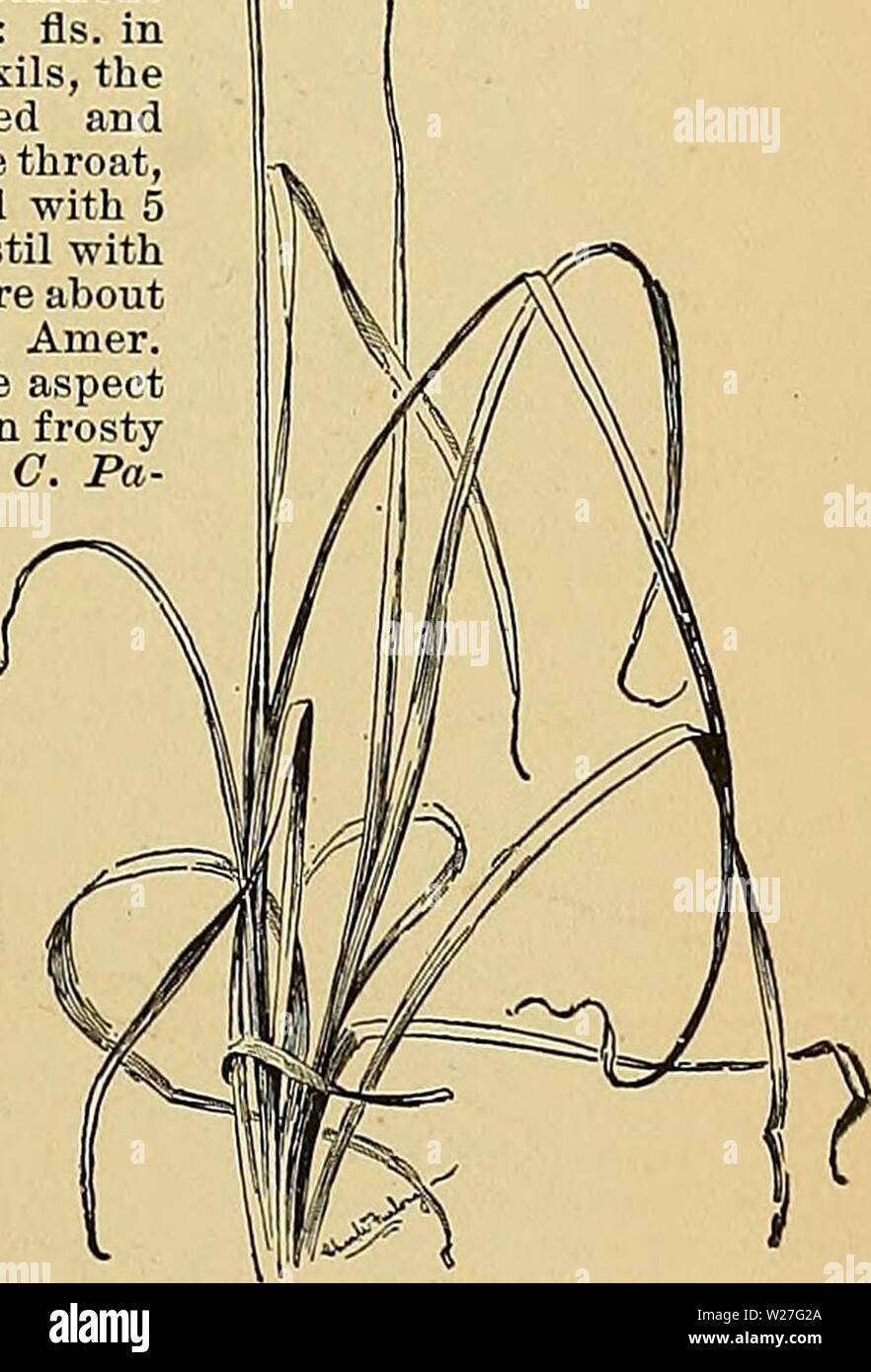Archive image from page 276 of Cyclopedia of American horticulture, comprising. Cyclopedia of American horticulture, comprising suggestions for cultivation of horticultural plants, descriptions of the species of fruits, vegetables, flowers, and ornamental plants sold in the United States and Canada, together with geographical and biographical sketches cyclopediaofamer01bail1 Year: 1900 The soil most suited 361. Carex long:irostris (X ). 360. Carex lurida. one of the common bos species. (Natural size.) a, staminate spike; 6, &, pistillate spikes. perigynia and awl-like, rough-pointed scales.

Image details
Contributor:
Bookive / Alamy Stock PhotoImage ID:
W27G2AFile size:
5.7 MB (214.1 KB Compressed download)Releases:
Model - no | Property - noDo I need a release?Dimensions:
1165 x 1717 px | 19.7 x 29.1 cm | 7.8 x 11.4 inches | 150dpiMore information:
This image is a public domain image, which means either that copyright has expired in the image or the copyright holder has waived their copyright. Alamy charges you a fee for access to the high resolution copy of the image.
This image could have imperfections as it’s either historical or reportage.
Archive image from page 276 of Cyclopedia of American horticulture, comprising. Cyclopedia of American horticulture, comprising suggestions for cultivation of horticultural plants, descriptions of the species of fruits, vegetables, flowers, and ornamental plants sold in the United States and Canada, together with geographical and biographical sketches cyclopediaofamer01bail1 Year: 1900 The soil most suited 361. Carex long:irostris (X ). 360. Carex lurida. one of the common bos species. (Natural size.) a, staminate spike; 6, &, pistillate spikes. perigynia and awl-like, rough-pointed scales. Probably Japanese.-Cult, for its stiff foliage. Grows 18-30 in. high. Allied to the N. Amer. C. bullata, Schk. for Caricas is a rich loam, having perfect drainage. As the stem is succulent and tender, great care is nec- â essary to avoid bruising; hence pot-grown plants are much to be preferred to seedlings from the open ground. Seeds should be selected from the best and largest fruits and sown in a well-worked bed under a Blight shade. If seeds are quite dry or old, they should be soaked in warm water before sowing. The seed- ling plants are delicate, and require close watching at first to avoid damping-off. Soon as plants are well up remove the shading, and after the third leaf ap- pears they may be pricked out into a larger bed, or bet- ter, potted off in fairly rich soil. After plants are a few weeks old, and have been shifted once into larger pots, they may be set permanently outdoors in the tropics. Caricas seldom branch, but usually grow up- right like a palm, hence cuttings are not often avail- able. Sometimes small branches form, and these may be cut off and as readily rooted as most tropical deco- rative plants, provided the cutting is not too young and tender. In temperate climates, Caricas have been